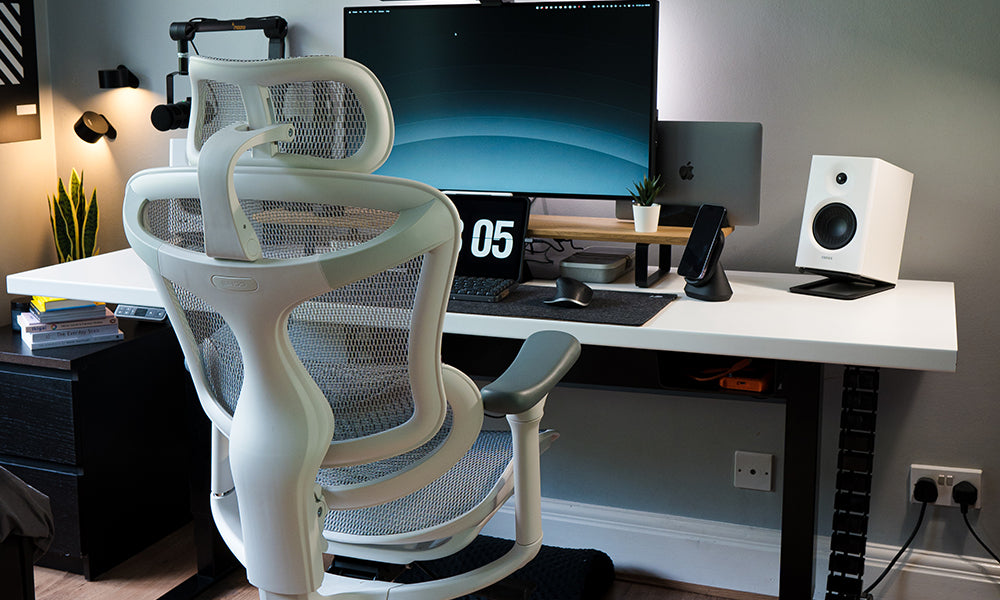The term "office chair butt" might sound humorous, but it reflects a real and common issue faced by many who spend prolonged periods seated at their desks. This phenomenon, also known as "chair butt," refers to the discomfort or pain experienced in the buttocks and lower back due to extended sitting. In this blog post, we'll delve into what causes office chair butt, its impact on your health, and practical tips to alleviate and prevent it.
What is Office Chair Butt?
Office chair butt is not a medical term, but it broadly describes the discomfort or pain in the buttocks and lower back resulting from sitting in an office chair for extended periods. This discomfort can manifest as soreness, numbness, or even pain, which may extend to the hips and thighs. It often occurs due to poor chair ergonomics, incorrect sitting posture, or a lack of movement during work hours.
Causes of Office Chair Butt
Several factors contribute to the development of office chairs butt. Understanding these causes can help you take preventive measures:
- Poor Chair Ergonomics: An office chair that lacks proper support or adjustability can lead to discomfort. Chairs that are too hard or too soft, or lack adequate lumbar support, can cause pressure points and discomfort in the buttocks.
- Incorrect Sitting Posture: Sitting with poor posture, such as slouching or sitting on the edge of the chair, can exacerbate discomfort. When the pelvis is not properly aligned, it puts extra pressure on the buttocks and lower back.
- Prolonged Sitting: Extended periods of sitting without breaks can cause the muscles and tissues in the buttocks to become stiff and uncomfortable. Sitting for too long without changing positions can also lead to reduced circulation and increased pressure on the buttocks.
- Lack of Movement: Regular movement and stretching are crucial for maintaining comfort while sitting. Lack of movement can lead to muscle fatigue and stiffness, contributing to office chair butt.
- Inadequate Cushioning: Office chairs with insufficient cushioning or poor-quality padding can increase pressure on the buttocks and contribute to discomfort. Over time, worn-out cushions may lose their ability to provide adequate support.
Impact of Office Chair Butt on Health
Office chair butt is more than just an inconvenience; it can have broader implications for your health:
- Musculoskeletal Pain: Chronic discomfort in the buttocks and lower back can lead to musculoskeletal pain, which may radiate to other areas such as the hips and thighs. This can affect your overall comfort and productivity.
- Reduced Circulation: Prolonged sitting without movement can lead to reduced blood circulation in the buttocks and legs. This may contribute to numbness and a tingling sensation in the affected areas.
- Postural Issues: Poor sitting posture associated with office chair butt can contribute to long-term postural problems, such as a rounded back or misaligned spine. This can lead to more severe musculoskeletal issues over time.
- Increased Risk of Health Conditions: Sedentary behavior and poor sitting habits are linked to a higher risk of developing health conditions such as obesity, cardiovascular disease, and diabetes.
How to Alleviate and Prevent Office Chair Butt
Fortunately, there are several strategies you can implement to alleviate and prevent office chair butt:
- Choose an Ergonomic Chair: Invest in a high-quality ergonomic office chair that provides adequate support for your back and buttocks. Look for features such as adjustable lumbar support, seat height, and cushioning to ensure a comfortable seating experience.
- Adjust Your Sitting Posture: Maintain proper posture by sitting with your feet flat on the floor, knees at a 90-degree angle, and your back supported by the chair's lumbar support. Avoid slouching or sitting on the edge of the chair.
- Take Regular Breaks: Stand up, stretch, and move around every 30 to 60 minutes. Incorporate short walks or stretching exercises to relieve muscle tension and improve circulation.
- Use a Cushion or Seat Pad: Adding a cushion or seat pad to your chair can provide additional support and comfort. Choose a cushion with adequate padding and ergonomic design to reduce pressure on the buttocks.
- Engage in Regular Exercise: Strengthening your core and lower body muscles through regular exercise can improve your posture and reduce discomfort from prolonged sitting. Incorporate exercises that target the glutes, hips, and lower back.
- Adjust Your Desk Setup: Ensure that your desk, chair, and computer are set up to promote good ergonomics. Your monitor should be at eye level, and your keyboard and mouse should be positioned to allow for a natural arm position.
- Consider a Standing Desk: Alternating between sitting and standing with a height-adjustable desk can reduce the amount of time spent sitting and alleviate pressure on your buttocks and lower back.
- Monitor Chair Condition: Regularly check and maintain your chair to ensure that it remains in good condition. Replace worn-out cushions or padding to ensure continued comfort and support.
Conclusion
Office chair butt is a common issue for many who spend long hours seated at their desks. By understanding the causes and implementing preventive measures, you can alleviate discomfort and maintain better overall health. Investing in an ergonomic chair, adjusting your posture, taking regular breaks, and incorporating movement into your daily routine are essential steps in addressing office chair butt. By prioritizing your comfort and well-being, you can create a more productive and enjoyable work environment.



